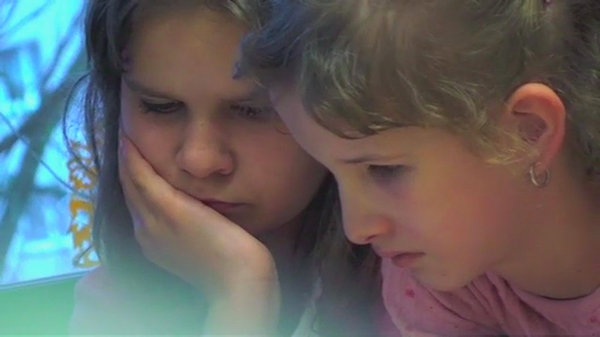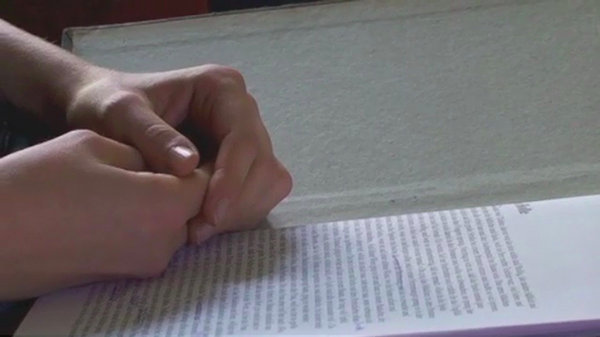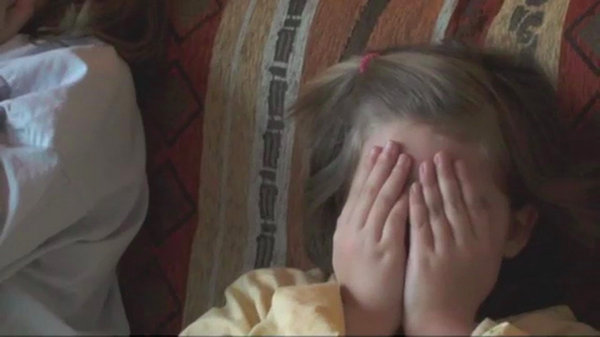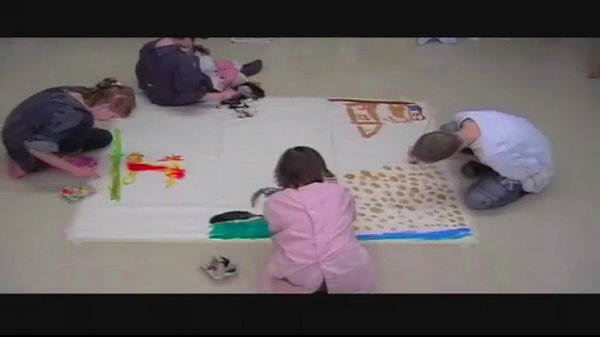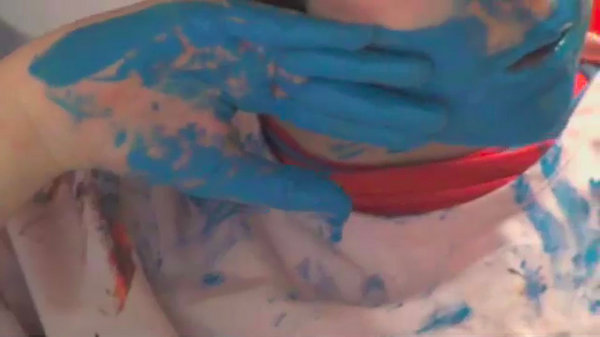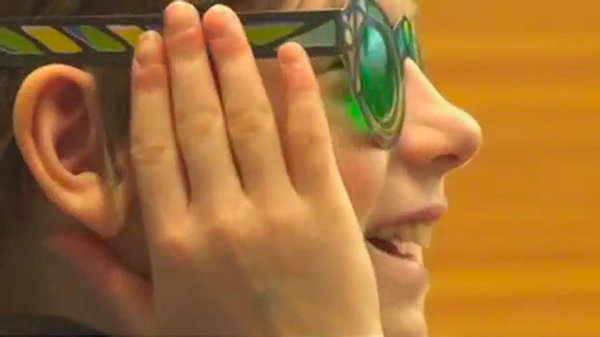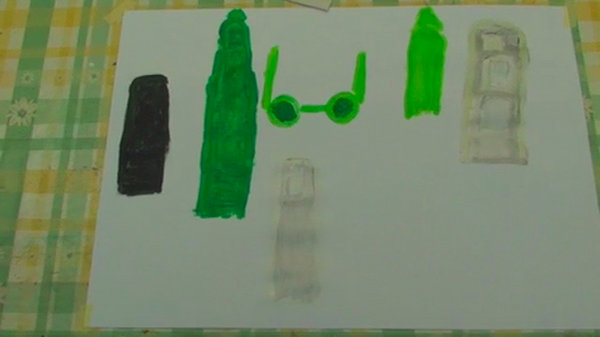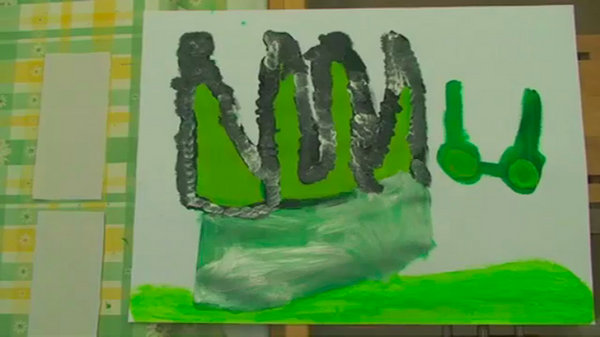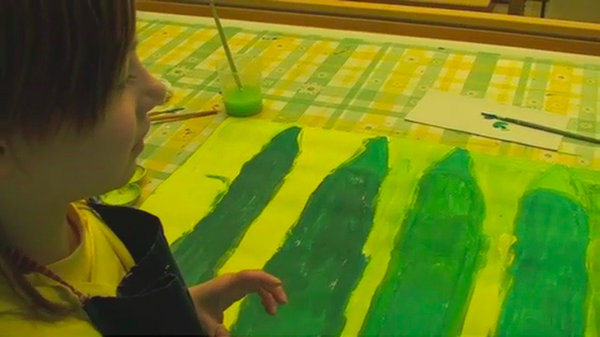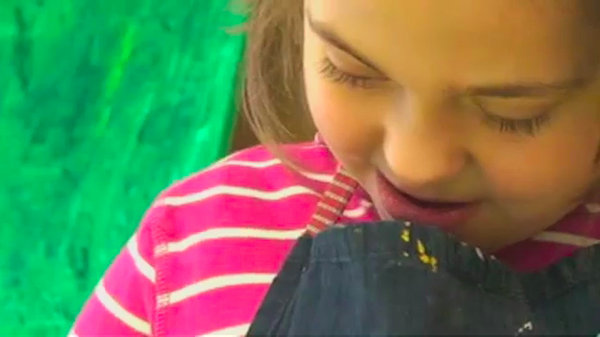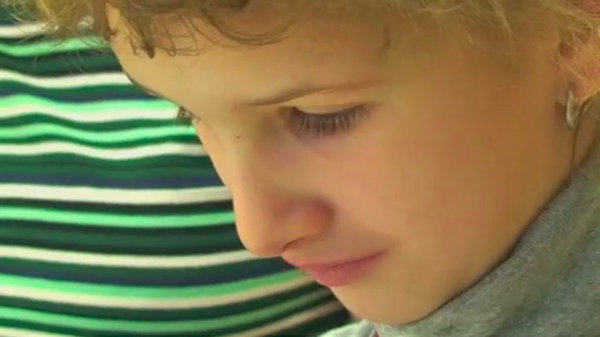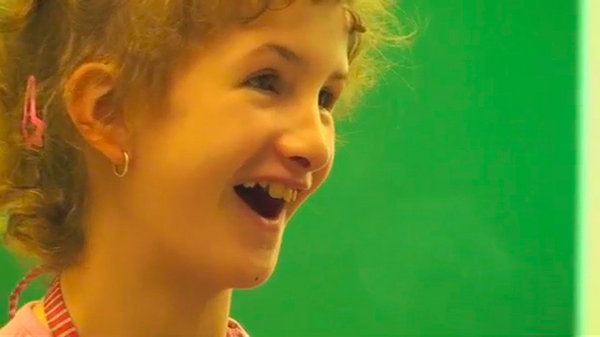Images from the video accompanying the project by Maxi Richter
Preliminary remarks:
The research project was carried out in cooperation between the Astrid-Lindgren-Schule für Geistigbehinderte Halle (Saale), the Design and Art Fundamentals of Color Light Space at Burg Giebichenstein University of Art and Design Halle and the Institute for School Pedagogy and Primary School Didactics at Martin Luther University.
Today, insufficient verbal fluency is often synonymous with a severe learning disability. If these children with learning disabilities communicate via descriptive media, they can acquire knowledge and social skills in a short space of time. Unfortunately, the subject of art is not taught in this way, which is why children with a verbal language impairment are generally not given the opportunity to participate in educational processes. Not all of them find their way into the school facilities where teachers with special educational expertise seek verbal, descriptive and artistic paths to the child. The study is designed as a model project, the findings of which can not only provide suggestions for special education, but are also intended to promote the discussion of primary school education in the subject of “art” or “design”. The responsibility lies with the university lecturers and politicians who are responsible for teacher training in this area. Every sighted person masters “visual communication” via the medium of color, through which we recognize lines, shapes, letters, surfaces, bodies, spaces, behavior patterns and intentions for action, as we acquire and use it in everyday life.
Investigation:
A story is read to a group of children, who are then asked to repeat the content verbally. The attempts largely fail due to the lack of verbal language skills and the children’s resignation to communicating via this medium, which is based on previous experience.
In the second part, the children are asked to describe the story in the group using the medium of color. The resulting processes, conflicts and problem solutions are observed, documented and evaluated.
In the third part, the children tell us what they think about their pictures. The results show that the children were able to make accurate and independent observations. They were able to form, express and communicate their thoughts through the medium of color in a vivid way. It was then much easier for the children to express their findings in words than at the beginning, as they only had to translate their visually expressed observations. In addition, the social interactions in the creative process were recognized, addressed and positively evaluated by the children.
Project participants: Angela Bartz, Dr. Joachim Penzel and Maxi Richter

